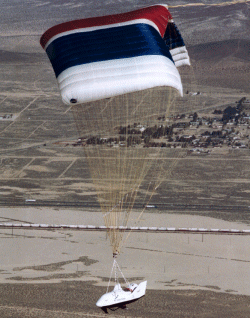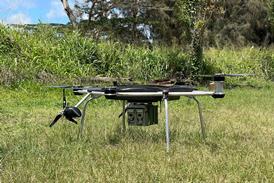TIM FURNISS / LONDON
The International Space Station (ISS) will be unable to operate with a full crew of six or seven people until 2008 according to a study by the NASA Johnson Space Center (JSC). It says the seven-person Crew Rescue Vehicle (CRV) should be a major part of the operation if the crew is to be expanded.
"Succeeding with the CRV is key to our long-term vision for NASA. This is recognised by every senior manager at the JSC and elsewhere in NASA," says the report, barely a month after a committee led by ex-Martin Marietta president Thomas Young slated management and budgeting of the ISS (Flight International, 13-19 November). The CRV would act as a dedicated "lifeboat" if the ISS has to be evacuated in an emergency. A Russian Soyuz spacecraft attached to the ISS is currently used as an escape vehicle for three crew.
The report emerged just days before the X-38 made its most ambitious drop test and parafoil glide flight on 13 December as Flight International went to press. The demonstrator, carried to 40,000ft (12,200m) strapped to a Boeing B-52 bomber, was successfully released and remotely piloted to a parachute landing at Edwards AFB by an astronaut in a simulated cockpit.
However, it is unlikely that space testing of a CRV prototype can take place until January 2005, and the earliest an operational CRV is likely to fly is August 2008, according to a shuttle manifest.

But the CRV issue "will not go away", the study says. The vehicle has been cancelled by NASA. But last month the US Congress approved the reinstatement of funds for the prototype, the X-38. ISS managers have often been told by NASA chiefs that the CRV was dead, but the decision has always been reversed based "on the merits of the project", adds the report.
The first request for additional funding towards establishing a fully-crewed ISS will have to be made in 2004, on the understanding that a six- or seven-person crew could be possible by 2006 using two Russian Soyuz T interim CRVs attached to the ISS.
The study says it is essential the ISS stays within budget "without any programme hiccups" for at least two years, as a pre-condition for any increase in crew size from the present limit of three people to build confidence in the project. This would involve longer stays for fewer expedition crews and fewer shuttle flights.
NASA would also require regenerative life support, a third Node module and habitation capability to support any crew increase.
Source: Flight International
















